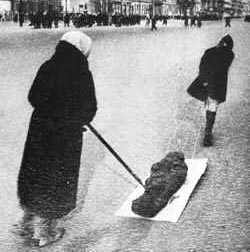

Famous Cases | Historical Tales | Vampires | Zombies
 |  |
Famous Cases | Historical Tales | Vampires | Zombies |
 |
| Wolrad/Nephilis in a portrait done just two years before he was turned. |
A: Without question, the biggest thorn in the side of the FVZA was Nephilis, an Alpha vampire who eluded vampire hunters for well over 300 years.
Nephilis was born in present-day Germany in 1688 and grew up in a world of privilege as Wolrad, Count of Ottweiler. At 6'6" tall, he was a commanding presence and a noted patron of the arts. He also was a notorious womanizer whose exploits earned him the ire of many a cuckolded husband. Fortunately for him, he was an outstanding swordsman and never lost a duel. Wolrad's libidinous pursuits finally landed him in real trouble in 1715, when he was turned by a vampiric prostitute.
The former Wolrad embraced the life of a vampire and changed his name to Nephilis, a nod to the race of beasts in the Bible known as the Nephilim. As was customary among vampires at the time, Nephilis "hid in plain sight." He moved easily through the upper crust of society and eventually married a Hapsburg princess named Elzbieta. He turned her on their wedding night and they lived together for more than 150 years.
Despite Nephilis' stature in society, his activities inevitably drew unwelcome attention and he had to move his base frequently; he lived, for a time, in Amsterdam, London and Madrid. Nephilis' life in Europe came to an end when the King of Spain put a bounty on his head. He made his way to America in the hold of a clipper ship and resumed his pattern of finding wealthy patrons to harbor him until the scrutiny of law enforcement forced him to move on. In the 20th century, he increasingly associated himself with bars, speakeasies and nightclubs, where his nocturnal lifestyle wouldn't stand out and where he could easily lure fresh blood. Since he had always been astute at moving around his vast fortune to avoid seizure, he never had trouble buying property or bribing the right people.
Nephilis saw himself as the Vampire Messiah that Quadilla had written of in the Middle Ages. He spoke 12 languages fluently, was a virtuoso on the piano and was able to attract followers and benefactors with his easy charm. Like a vampiric Forrest Gump, he was allegedly present at many historical events, including the sacking of the Bastille in Paris (1789), the first performance of Beethoven's Ninth Symphony in Vienna (1824), and the San Francisco earthquake and fire of 1906.
Vanguard agents hounded Nephilis relentlessly through the 1950s and 60s. Our closest call came almost by accident in 1971, when a team stumbled upon his base during a rescue operation at a New York City nightclub. However, Nephilis killed an agent and escaped by leaping atop a moving subway train. After he fled, agents were shocked to discover a labyrinthine complex under the nightclub, including a chapel decorated with human skulls, a pit for live captives and a laboratory where the legendary vampire appeared to be trying to develop a daywalking serum. Since then, there have been no sightings of him.
God willing, we have seen the last of him. But I wouldn't bet on it.
 |
| A Louisiana State Trooper surveys the damage left behind by Hurricane Katrina. |
A: Zombie breakouts are always a concern in the wake of hurricanes. In fact, FVZA teams were sent into hurricane-ravaged areas as a matter of routine up until the late 1960s. I myself worked in the Mississippi coast area in the wake of Hurricane Camille in 1969. It was difficult work, made more so by the fact that many hurricane survivors tend to wander about in a zombie-like state after the storm departs. Nevertheless, our prompt response to Camille and other hurricanes helped avoid storm-related zombie outbreaks like that which hit Key West in 1935.
Up till now there have been no reports of zombie activity along the Gulf Coast area affected by Katrina. However, the large number of missing persons reports in the area does concern me. As for your second question, zombie outbreaks spread mostly through the bite from an infected person. Airborne transmission of the virus is a highly remote possibility.
Q: Dr. Pecos, do zombies have working intestines? Do they have bowel movements? Are all zombies evil? If a friend or family member became infected, am I in danger of being eaten? Thank you very much, I look forward to hearing from you.
![]() Brendan C., Charleston, Illinois
Brendan C., Charleston, Illinois
A: Yes. I believe I touched upon this before but zombies do have bowel movements and, in fact. zombie scat is a useful though far from appetizing means of tracking them.
Regarding your other question, notions of good and evil are irrelevant when discussing zombies. While many people believe zombies represent the legions of hell spilling over onto the earth, they are in fact people with a disease who are powerless to control their impulse to feed. And yes, if a family member is infected, you stand a great risk of being infected, particularly early in the process, when you might mistake zombieism for other more common ailments.
Q: Do zombies and vampires have to have water?
![]() Corey M., Capitan, N.M.
Corey M., Capitan, N.M.
A: Yes. Neither can survive without it. Of course, vampires get plenty of water from blood. Zombies will lap water from almost anywhere: puddles, sewers, streams. Not surprisingly, they do not last long in desert areas.
Q: Dear Doctor Pecos, if a human turns into a zombie, can he turn back into a human? Also, can zombies reproduce?
![]() Jason H., South Africa
Jason H., South Africa
A: No, the zombieism process is irreversible. As for zombies reproducing, oh God no. The transformation process and the high fever associated with it render them sterile. Once transformed, a zombie cannot get aroused. Rest assured, if you see a zombie approaching and he appears to be, how do I put this delicately, happy to see you, the last thing on his mind is propagation of the species. Zombie erections are a rare but not unheard of side effect of the bloating and decomposition of their genitals.
A: During the 1980s, I corresponded with a German World War II vet who had been an infantryman in the northern army group that encircled Leningrad (present day St. Petersburg) in September of 1941, leading to a 900-day siege that left almost a million people dead. The man claimed he had killed a number of zombies during the fall of 1942. In a letter to me, he related the following account of his first zombie sighting:
 |
| Transporting a dead child during the siege. |
The man's tale was much on my mind when I traveled to Moscow in 1993, not long after the fall of the Soviet Union. I was there to visit a fellow scientist named Dmitri Muzeschenko and comb through archives previously hidden from public view. After viewing these documents, I came to the conclusion that the Siege of Leningrad almost certainly resulted in one of the largest zombie outbreaks in world history.
The Siege of Leningrad began a few months after the German Army invaded the Soviet Union. At the time, the city's population of 2.5 million had swelled with an additional 1 million refugees. By the winter of 1941-42 there was no heating, no water supply, almost no electricity and very little food. The cityfolk subsisted on meager rations often supplemented with sawdust and other inedible additives. Dogs and cats were hunted for food and some of the truly desperate resorted to cannibalism, digging up freshly buried bodies in the dead of night. In Moscow, Stalin turned a deaf ear to the plight of the people, as he was perfectly willing to sacrifice them to save himself. In fact, he ordered troops in the city to use any means necessary to prevent the people of Leningrad from leaving.
The siege proved to be a boon to at least one of the city's inhabitants: rats. The rat population exploded; they moved about in enormous colonies, laying waste to everything in their path. Not only did the rats eat the last of the scarce food supplies of the city, they brought along a most deadly contagion: the zombie virus.
The first zombies were spotted in the city in the summer of 1942. Stalin ignored pleas for help, and so the citizens of Leningrad did what they had been doing from the beginning: they banded together and persevered. Zombie hunting brigades, including many women and children, were hastily assembled. The brigades made significant inroads by luring zombies into confined spaces, trapping them and then burning them. Threatened by the Nazis and handcuffed by a paranoid and repressive state bureaucracy, the zombie brigades soldiered on and kept alive the two-thirds of the population who survived the siege. The plague finally eased its grip during the winter of 1942-43, when frigid temperatures slowed the zombies considerably. Bodies of frozen zombies were burned to ensure that they didn't reawaken upon thawing in the spring.
Estimates put the total number of dead in the city during the siege somewhere between 650,000 and 800,000. As to how many of those dead were actually undead, we'll probably never know.
 |
| Bub the zombie from Day of the Dead. |
A: The Doc's attempts to "domesticate" Bub the zombie is a rather touching aspect of Romero's Day of the Dead. Romero's new movie, Land of the Dead, has a similar scenario in which zombies learn behavior through observation. But when it comes to zombie science, both movies take considerable poetic license.
The truth is that the window for zombie learning is only open a crack to begin with, and it closes rapidly after transformation. Within the first two or three days after transformation, a zombie can operate simple machinery and drive (as I mentioned in the Zombie Outbreak Interactive Case). A zombie also could learn a simple activity such as pumping gas or unlocking a door with a key card in those first days post-transformation. But their ability to learn goes downhill fast as they decompose and experience a steady loss of grey matter. Learning new things becomes well nigh impossible for them because their short-term memory is the first to go.
 |
| The Nephilim were said to come from the union of fallen angels and humans. |
"Nephilim," or "fallen ones," are described in the Bible as a powerful and depraved race allegedly resulting from the union between fallen angels and mortal women. The Nephilim possessed prodigious strength and their appetites knew no bounds. After devouring all of humankind's resources, they began to consume humans themselves.
The Nephilim received their comeuppance when God instructed the angel Gabriel to ignite a civil war among them. They eventually annihilated each other, although their spirits remained on the earth to become demons, according to the Bible.
It is likely that the Nephilim described in the Bible and the Dead Sea Scrolls were vampires. They are variously referred to as Rephaim, or "Dead Ones" (2 Sam. 23:13; 1 Chron. 11:15) and Awwim, or "Devastators" and "Serpents." The Bible states that the Nephilim could not lift their eyes to heaven, likely an allusion to the fact that vampires were unable to go out in the daylight.
The legendary vampire Nephilis, who led the Order of the Broken Cross and was never captured by the FVZA, took his name from this mythical race of people.